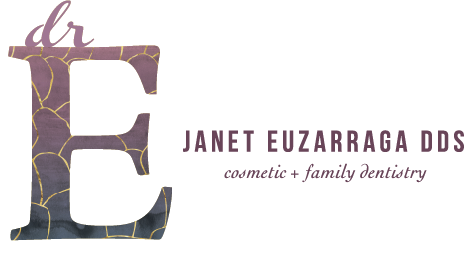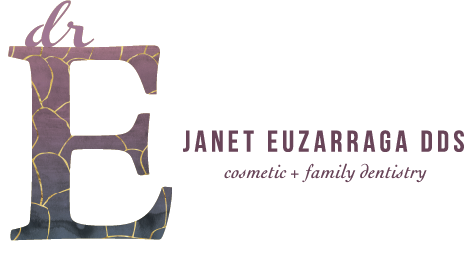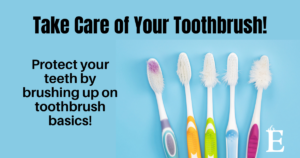Take Care of Your Toothbrush!
Protect Your Smile by “Brushing Up” on these Toothbrush Basics
When it comes to dental hygiene 101, your toothbrush is one of your most important tools. After all, it’s impossible to achieve a healthy smile without the help of your trusted toothbrush. But do you know how to take care of your toothbrush properly? Ask yourself the following key questions and learn more below from the Dr. E Cosmetic and Family Dentistry team about brushing basics and toothbrush care!
Does it matter which type of toothbrush I use?
Keep in mind that when you choose a toothbrush, the best one for you is the one you’re actually going to pick up and use daily! Therefore, you should keep factors like comfort and convenience in mind when selecting a toothbrush. Safety should also always be a key factor in your choice of toothbrush. Look for the ADA Seal of Acceptance, which signifies that the toothbrush has been evaluated to make sure it’s safe (the handle and bristles won’t break) and effective (it is designed to clean your teeth and gums correctly).
How can I choose the right toothbrush?
Soft bristles are best! Choose a soft-bristled toothbrush to gently and safely massage your teeth and gums. Harder bristles can wear away protective tooth enamel and end up damaging your gums.
Size matters. One size does not fit all when it comes to toothbrushes! When selecting a toothbrush, pick a size that can easily fit into your mouth with bristles that cover 1 -2 teeth at a time. The toothbrush head should be small enough that you can easily manipulate it around your mouth to access hard to reach areas such as the molars. The standard size toothbrush for adults is approximately ½ inch wide and 1 inch long. Children’s toothbrushes generally have a smaller brush head and a slimmer handle.
Manual vs electric; which is best? It’s usually a matter of preference. Manual toothbrushes are less costly than electric brushes but can be just as effective in cleaning your teeth and preserving your smile. However, your dentist may recommend that you try an electric toothbrush if you wear braces or have difficulty manipulating a toothbrush due to arthritis or other mobility issues.
What is the best way to clean my toothbrush?
To take care of your toothbrush you need to clean it regularly. We use our toothbrushes daily to remove plaque, debris and germs from the mouth. That’s why it is crucial to clean your toothbrush thoroughly and properly between brushing. Follow these tips to keep your toothbrush clean and working effectively:
- First off, wash your hands before your brush so that you can be sure not to transfer any germs from your hands onto your brush.
- Rinse your toothbrush thoroughly with warm tap water after you brush.
- After rinsing, let your toothbrush air dry and store it uncovered in an upright container (closed containers can breed bacteria).
- To deep clean your toothbrush, mix 1 teaspoon of peroxide in 1 cup of water. Swish and/or soak the bristles of the toothbrush in this solution for 15 minutes and rinse before brushing.
How often should I replace my toothbrush?
The American Dental Association recommends that you replace your toothbrush every 3 to 4 months, or sooner if the bristles look worn out or frayed. Also, it’s a good idea to replace your toothbrush after you are sick with a virus or cold or after travel (if you did not bring a travel toothbrush). Have you wondered why many toothbrushes contain bristles with colored edges? When the color fades, this signals that it’s time for a new brush. However, you can also set calendar reminders to ensure that you switch out your family’s toothbrushes every few months.
Follow these toothbrush basics for a healthy, sparkling smile… and be sure to contact the Dr. E Cosmetic and Family team to schedule your next appointment! 480-494-2435


